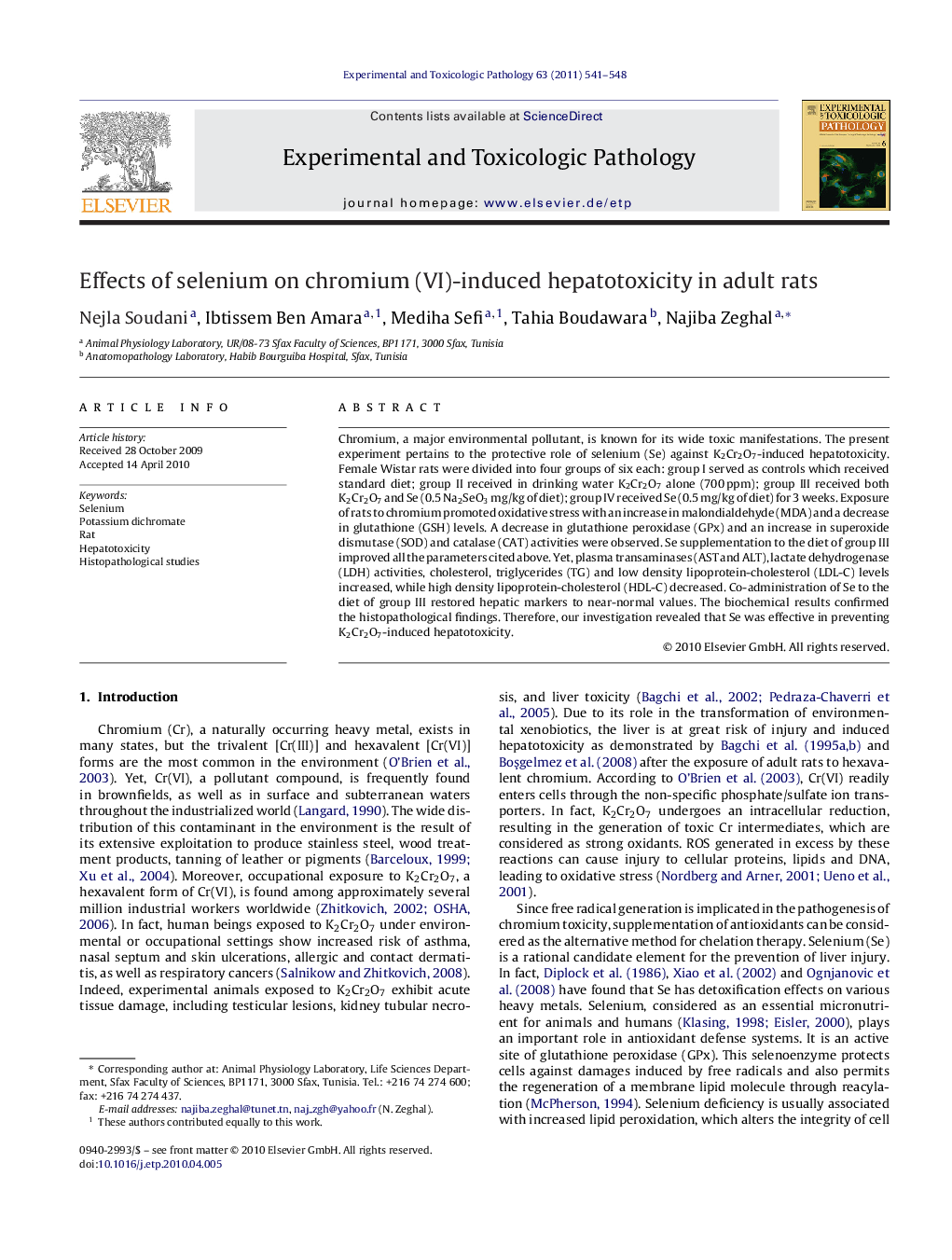| Article ID | Journal | Published Year | Pages | File Type |
|---|---|---|---|---|
| 2499028 | Experimental and Toxicologic Pathology | 2011 | 8 Pages |
Chromium, a major environmental pollutant, is known for its wide toxic manifestations. The present experiment pertains to the protective role of selenium (Se) against K2Cr2O7-induced hepatotoxicity. Female Wistar rats were divided into four groups of six each: group I served as controls which received standard diet; group II received in drinking water K2Cr2O7 alone (700 ppm); group III received both K2Cr2O7 and Se (0.5 Na2SeO3 mg/kg of diet); group IV received Se (0.5 mg/kg of diet) for 3 weeks. Exposure of rats to chromium promoted oxidative stress with an increase in malondialdehyde (MDA) and a decrease in glutathione (GSH) levels. A decrease in glutathione peroxidase (GPx) and an increase in superoxide dismutase (SOD) and catalase (CAT) activities were observed. Se supplementation to the diet of group III improved all the parameters cited above. Yet, plasma transaminases (AST and ALT), lactate dehydrogenase (LDH) activities, cholesterol, triglycerides (TG) and low density lipoprotein-cholesterol (LDL-C) levels increased, while high density lipoprotein-cholesterol (HDL-C) decreased. Co-administration of Se to the diet of group III restored hepatic markers to near-normal values. The biochemical results confirmed the histopathological findings. Therefore, our investigation revealed that Se was effective in preventing K2Cr2O7-induced hepatotoxicity.
